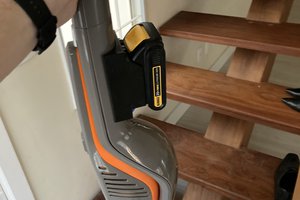After realizing that there are a few details missing from the blog, I decided to post more details on this quick project.
Introduction: I've been wanting a fairly simple, small, and lightweight Geiger Counter with a personal twist while also having a fairly long battery life compared to my digital counters. This is a very simplified design and can be vastly improved (I only have a fairly basic understanding of electronics). If anyone has a suggestion on improving this, please let me know!
Parts:
- Geiger Muller Tube = SI-29BG (I was planning on using an SBT-11A which had a mica window but this ended up becoming too big *see below for just how big it was*)
- High Voltage Supply = IMEX-38-56
- PAM8403 Amp
- 250mAh LiPo Battery
- Salvaged speaker and switch
- 3D printed case (Note: This STL does not have a hole for the switch, usb outlet, and voltage selector trim pot screw)
https://tinkercad.com/things/90Z4GmhNBBr
- TP4056 Based micro-USB charger (Pick a charger that suits the battery, do NOT exceed the specs for the battery you choose or it could explode. Also avoid charging above 1C as this will reduce battery life). Common LiPo batteries are around about 3.7V but keeping the charging voltage at 3.6v can greatly increase the battery life.
https://learn.adafruit.com/li-ion-and-lipoly-batteries/proper-charging
https://endless-sphere.com/w/index.php/Battery_Deterioration
Construction:
The main challenge was to fit all the components in a tight of an arrangement as possible. Here are some tips.
- Plan out how this circuit will fit inside the Geiger Counter to accommodate the GM tube of your choice.
- Assemble the circuit following this schematic outside of the case in the relative configuration to above plan.
- The audio amplifier can be replaced with a simple darlington transistor instead of the PAM8403.
- If using a PAM8403 to amplify the pulse, try to isolate the signal and the amplifier as unwanted noise can be picked up from the high voltage array.
- Make sure to isolate all of the components as it will be a tight fit.
- If you have a "crappy" 3D printer like me, the tolerance will not be good and the lid will most likely not fit perfectly. If the lid is too tight, shave or sand the lid. If the lid is too loose, increase the lid size before printing.
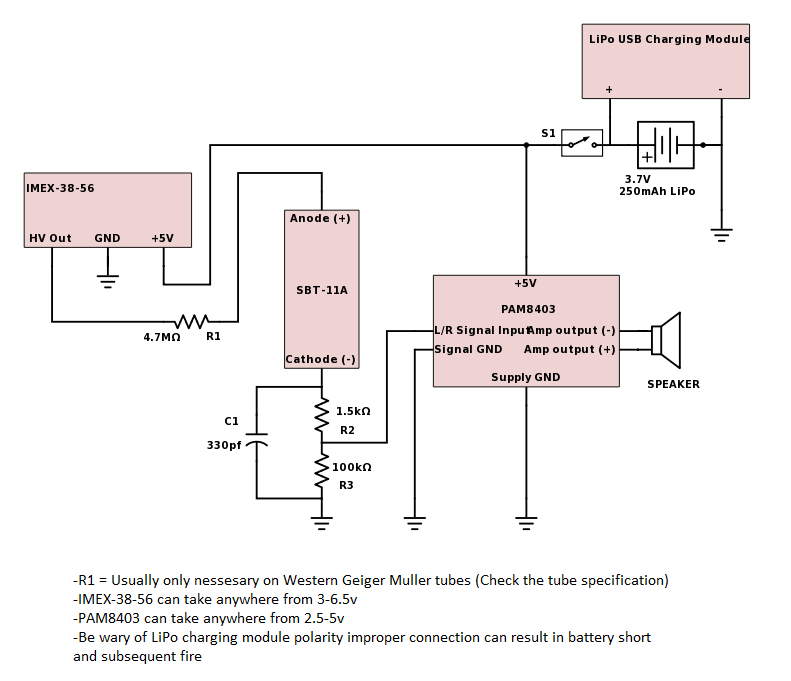
Performance Comparison:
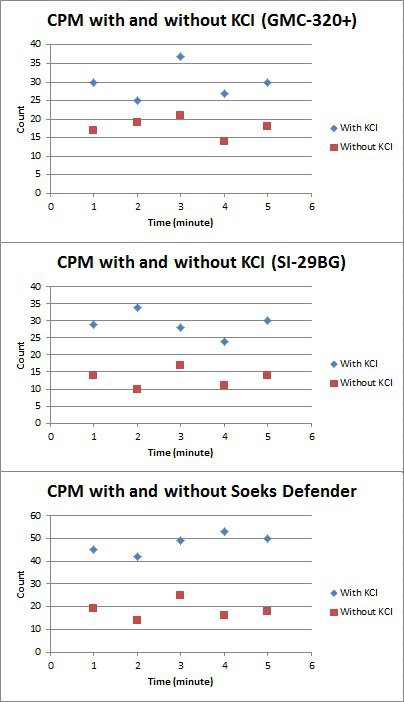
Feedback:
- Comment: The 3D print looking horrible and the amount of hot snot is disgusting
- Reply: Yes it could've been a lot better and I could've spent some time finishing it but with a dirt cheap 3D printer (Max Micron Prusa i3) without an enclosure and a 0.2mm ABS it's all I can manage at the moment. As I wanted to save space without adding a way to properly mount each parts, hot snot was the easiest material I had at hand to immobilize + insulate most of the components (I guess I could've used silicone or epoxy [and yes AvE hates hot snot but I find it useful in certain situations]).
- Comment: A standard plastic box, proper mounting and 3D printed decals would have been way nicer.
- Reply: I cannot ever find a perfectly fitting enclosure for most of my projects in Canada (I'm either always left with useless dead space or not enough and I didn't want to buy a proper mounting for such a simple project. Also if I was to use a standard plastic box, I would've had to drill and dremel square USB ports and other features. However, I do like your idea of printing out just the decals and using a standard plastic box (albeit it may not be the perfect size) for future projects.
- Comment: Filler primer, sand, and paint would help.
- Reply: Yea... That would've probably helped. I may make a new case and actually do some finishing on it and spray painting instead of using acrylic paint.
- Comment: Wouldn’t a scintillation counter be easier?
- Reply: I personally love scintillation counters (as opposed to Geiger Counters which saturates at high radiation levels) but the complexity, size, and cost of mounting even a relatively small photo detector with a scintillating material was beyond the scope of this project. If...
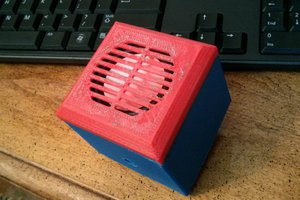
 Adam Oakley
Adam Oakley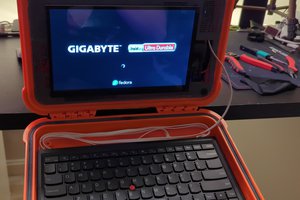
 Andrea
Andrea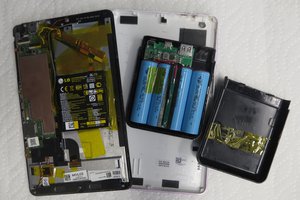
 PointyOintment
PointyOintment